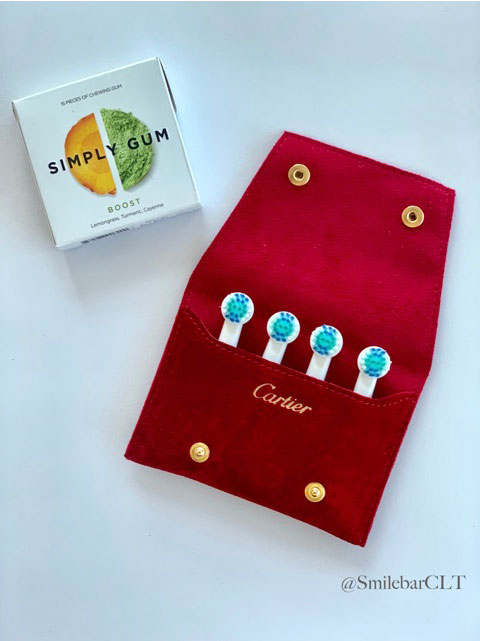Heads up: This post is not about whether you should be using an electric or manual toothbrush, it is about the various electric toothbrush types. If you’re not already using one, it’s time to stash that manual toothbrush you have with your old Nokia flip-phone. And no, one with an AAA battery does not count. Seriously.
Electric toothbrushes have been commercially available since the 1960s so they’re not exactly the new kid on the block. Clinical studies have shown Electric toothbrushes remove more plaque given the same amount of time as a manual toothbrush AND reduce gingival inflammation and staining. Bye-bye bleeding gums, hello pearly whites!
Nowadays, it can be overwhelming to decide which one to get. They range from $40 to upwards of $200, have tons of features, are made of different materials, the list goes on and on. I mean who has time to research a toothbrush? Ding, ding, ding, we do!
There are two basic motions of an electric toothbrush: Sonic and Rotary/Oscillating Motion.
Sonic Toothbrushes work with rapid vibration of the bristles in a side to side movement to break up and remove plaque from your teeth. The sonic toothbrushes use a longer, oval brush head that cleans more teeth at once. The most well-known sonic toothbrush is the Sonicare. Meanwhile, oscillating/rotating toothbrushes combine a spinning of the brush head from left to right and pumps up and down. The Oscillating toothbrushes use a smaller, round brush head that cleans each individual tooth better. The industry leader of the rotating electric toothbrush is the Oral-B.

At Smilebar, we recommend these buzzy brushes for more than their plaque-attacking abilities. They also feature:
-
- Multiple brush modes: sensitive and whitening are our favorite modes
- Pressure sensors: Stop you from brushing too hard
- Timers: so you know if you actually brushed for two minutes
Ok, so seriously- which one? Dr. Patel will not recommend any dental product if she hasn’t used it herself and has seen a benefit from it (no, we don’t get any endorsements). If you already use a Sonicare, live it up. They work, they’re good, however, we are team Oral-B. We have tried both, but we prefer the handle on the Oral-B with an easy grip, the bristles are individual rather than in a bunch, it’s cheaper, plus it feels more like a massage for your mouth than it does brushing your teeth!
The Newcomers: There are a lot of instagrammable, subscription toothbrushes with a lower price point/less features and highlight current trends like “charcoal infused bristles” (refer to Charcoal post if you are wondering about that), but they are not comparable to the tried-and-true Oral-B & Sonicare. Because they do fall into a lower price point and are more aesthetically pleasing, we are working on finding a brush we believe in that falls in this category. But keep in mind, it’s not going to have the wonderful sensitivity and whitening modes, Bluetooth capability, or pressure indicator that we so love! When we find one, we’d still only recommend this style brush for someone with healthy gums, no cavities or fillings, no medications, and no other oral conditions. If you know of one you want us to test out, let us know!
At the end of the day, this is about the health of your mouth not the aesthetics of your bathroom countertop. The Oral-B Genius Electric toothbrush has a timer, a pressure indicator, various brushing modes, connects to your smartphone and holds a charge for about two weeks. If you are still unsure, come by and take it for a spin (pun intended) and see if it’s for you.
Have questions or comments? Call, email, or DM us. We’d love to hear from you!


